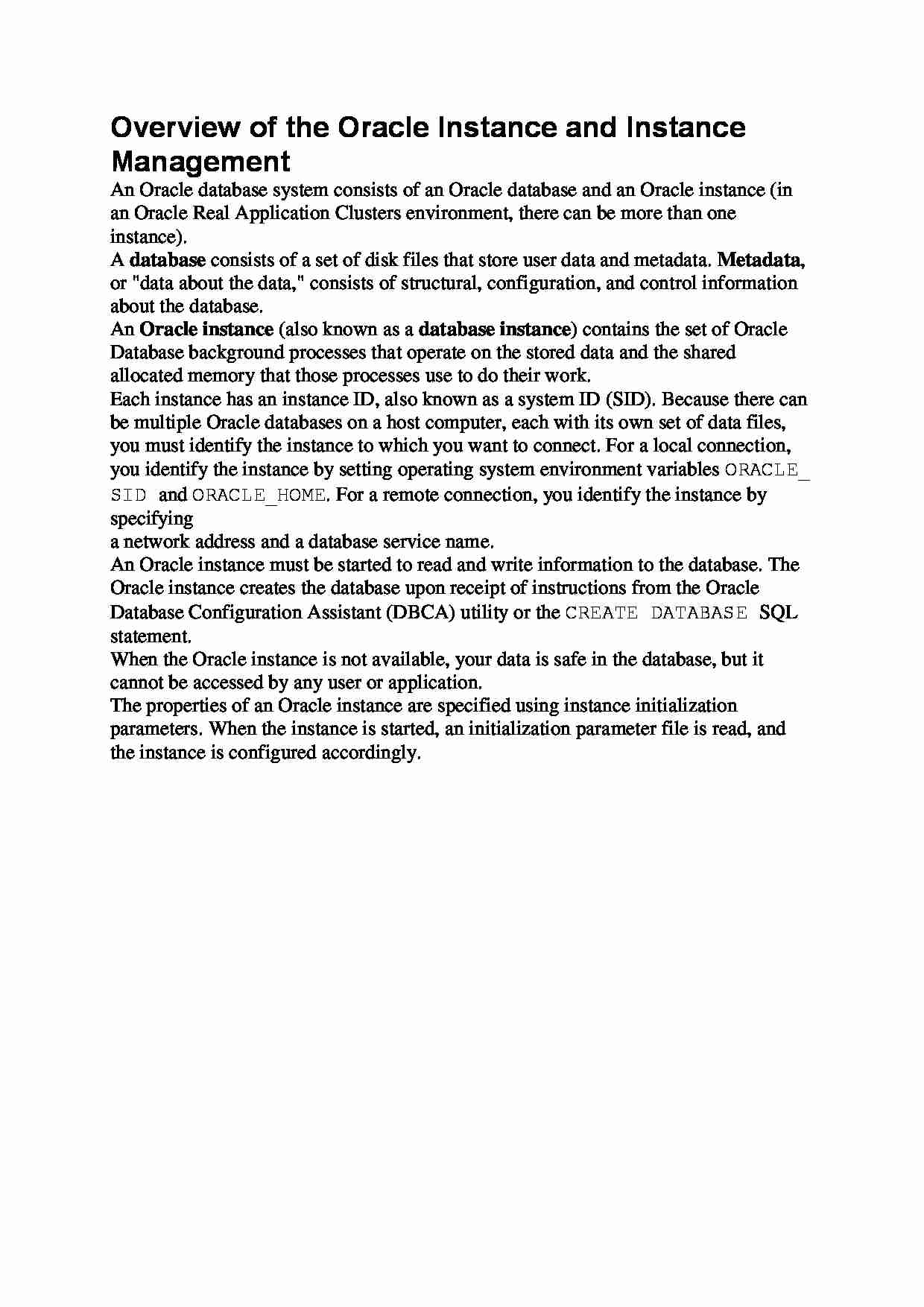
Overview of the Oracle Instance and Instance Management
An Oracle database system consists of an Oracle database and an Oracle instance (in
an Oracle Real Application Clusters environment, there can be more than one
instance).
A database consists of a set of disk files that store user data and metadata. Metadata,
or "data about the data," consists of structural, configuration, and control information
about the database.
An Oracle instance (also known as a database instance) contains the set of Oracle
Database background processes that operate on the stored data and the shared
allocated memory that those processes use to do their work.
Each instance has an instance ID, also known as a system ID (SID). Because there can
be multiple Oracle databases on a host computer, each with its own set of data files,
you must identify the instance to which you want to connect. For a local connection,
you identify the instance by setting operating system environment variables ORACLE_
SID and ORACLE_HOME. For a remote connection, you identify the instance by specifying
a network address and a database service name.
An Oracle instance must be started to read and write information to the database. The
Oracle instance creates the database upon receipt of instructions from the Oracle
Database Configuration Assistant (DBCA) utility or the CREATE DATABASE SQL
statement.
When the Oracle instance is not available, your data is safe in the database, but it
cannot be accessed by any user or application.
The properties of an Oracle instance are specified using instance initialization
parameters. When the instance is started, an initialization parameter file is read, and
the instance is configured accordingly.
... zobacz całą notatkę



Komentarze użytkowników (0)